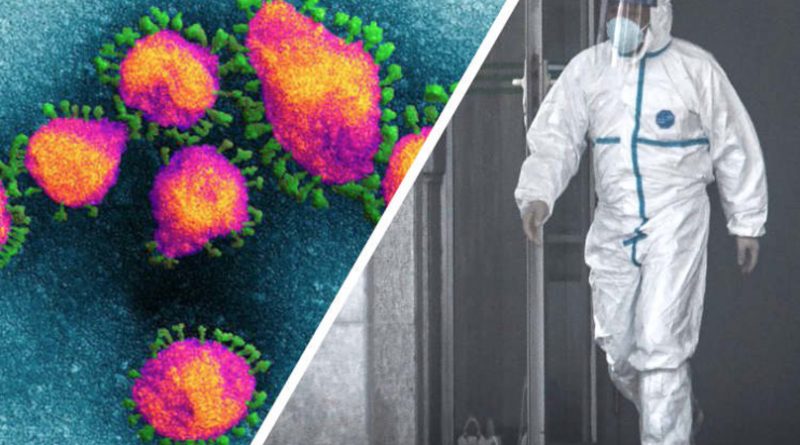The ‘great variety’ of Australians will not catch coronavirus – transcript

Hi All, read carefully the interview transcript below, note the promotion for a fast-tracked vaccine product in the conclusion – consider this in light of Robert Booy’s suggestion “…the great majority of people, I think, will not catch it. Furthermore, those that do catch it, a good 80 to 90 percent, will have no more symptoms than that of a common cold or a viral bronchitis. It’s only the five to ten percent of people who get it more severely might need to see their GP, and then maybe a half or third of them might need to go to hospital.” Robert Booy also says: “So it is nasty, because so many people are going to get it, but the great majority will not get it severely.”
Bearing in mind this, admittedly confusing message, should the general population be pressed to get a fast-tracked experimental vaccine product, particularly considering the emerging uncertainties with vaccines?
Also FYI, see attached an article with comments from Professor Ian Mackay, which is referred to in the transcript below. Consider this excerpt from the attached article: “We already have four of these coronaviruses, mostly causing colds. We get them every year. They peak during winter but they still move around between us during the rest of the year as well. So it’s likely this might become one of those.” Professor Mackay said if that was the case, “at some point in the coming months or years we’re all going to get infected because we’ve all been infected by these other endemic viruses”. “We know that they just spread among us,” he said.
Elizabeth
The ‘great variety’ of Australians will not catch coronavirus
Robert Booy interviewed by Peta Credlin on Sky News (Murdoch media)
https://www.news.com.au/national/the-great-variety-of-australians-will-not-catch-coronavirus/video/e3a9ea1e7c8198988ac6d5cab2fdf211
Transcript prepared by Elizabeth Hart
Note: Robert Booy is a vaccine industry associated academic who is very influential on Australian and international vaccination policy
Peta Credlin: Want to move onto coronavirus because it was heavily in the news across a number of fronts, the economic front, but obviously the viral front as well today. We read reports that specialists in this area now say it’s almost impossible to contain the spread, and that eventually we’ll all be infected by some kind of strain of the virus. Now how true is all that? I am not a coronavirus expert. But I know someone who is. Professor John (actually Robert) Booy is head of clinical research at the National Centre for Immunisation Research and Surveillance, he’s an infectious diseases specialist, he joins me now from Sydney. Professor, thank you very much for your time. I think it’s so important that I get experts like you to talk about this because I don’t like a sense, particularly in the media, that people are panicked, without getting accurate information. There was a report today from a Professor Ian MacKay, saying it would be unrealistic to expect coronavirus can be contained, and that eventually we will all get it. Now I suspect it’s not dissimilar in that respect to the flu, eventually, if we live long enough, we all get some variant of the flu. Take us through how true this is, and what should be our level of expectation?
Robert Booy: Well, this coronavirus is probably going to infect at least 10 or 20 percent of people. But if it gets out of control in Australia it could go up to 50 or more percent. It’s not going to get to everybody. Some people will have some immunity. Some people will just be, spatially unlikely to contact the virus. So the great majority of people, I think, will not catch it. Furthermore, those that do catch it, a good 80 to 90 percent, will have no more symptoms than that of a common cold or a viral bronchitis. It’s only the five to ten percent of people who get it more severely might need to see their GP, and then maybe a half or third of them might need to go to hospital. So it is nasty, because so many people are going to get it, but the great majority will not get it severely.
Peta Credlin: Well just on the point that you talk about vulnerable people, I presume there we’re talking about people with a compromised immunity, older people, infants and young children. What makes it capable of being a cold in one person and life-threatening in another?
Robert Booy: Well, I just want to pick you up on one point there. I’m a pediatrician, and we’re really quite surprised how little children are being affected by this virus. It may be that…
Peta Credlin: Wow, that’s interesting.
Robert Booy: Yeah. When they catch it for the first time they only have a mild reaction. Maybe we as adults, and older adults especially, maybe I’m one of them, has seen corona before, and our immune response is much stronger and excessive and leads to a severe pneumonia in a percentage of people. Now, who’s going to get it? We’ve no test to say why one gets it severely or one doesn’t. But we do know that elderly people, especially people with multiple morbidities – heart, lung, kidneys, diabetes – those people are likely to get it more severely, and more likely to be hospitalised, and the death rate in that could be five to ten percent which is, you know, quite a concern.
Peta Credlin: Alright. We now know, at least in Australia, we’re operating under a national pandemic plan. Now this is a national pandemic plan. Similar ones I remember from my time in the Abbott government, they have been around to deal with any unexpected new virus to emerge. Before it was Avian flu we were worried about, then it was SARS, now it’s coronavirus. What does it mean to be operating under a pandemic plan? What protocols are different in hospitals for example, or a doctor’s surgery, if anyone is going into those places for other reasons, what would we know or see that’s different?
Robert Booy: Well health professionals are working day and night making preparations. We’re going to have things like fever clinics, potentially hundreds of them around Australia, where you can be seen quickly and effectively by a GP or an emergency department physician. We’re going to have coordination between public health so that we have adequate places for people to be quarantined, so that we have hospitals which aren’t doing elective surgery any more, but putting all their focus on the large number of patients who need special care or especially intensive care. Intensive care units are already being expanded. And by providing more capacity, both at the primary care and at the secondary and tertiary hospital care, but also reducing the need for other medical things which can be put off or cancelled, will better able to, we’ll be better able to cope with this impending pandemic. And I think it’s coming to us in the next one to two months. I’ve seen already a report that the United States has perhaps the beginning of person to person transmission. Italy, a rich country, South Korea, a rich country, have hundreds of cases, thousands in South Korea. So it can only get to us because there are 50 countries, someone’s going to get off a plane, in fact tens and hundreds of people could easily get off a plane with a mild illness. Remember, the majority of people have a mild illness. So they could be pre-symptomatic or mildly symptomatic and only get unwell a week after arriving here.
Peta Credlin: Alright. How many Australians then, under all those conditions, and we’ve watched how it’s moved outside of China, we’ve watched, you know, ramifications in a transparent country like Italy. How many Australians do you think are going to have coronavirus? At some point, you know, the infection rate, how many do you think we’ll have?
Robert Booy: As part of the pandemic wave, the number of infections I would hope may be only ten to twenty percent. And that’s, you know, two and a half to five million, so that’s a considerable number. But most of them will be mild, most of them will be able to self quarantine at home until they’re getting better. They won’t need to go to the GP even. If you do need to go to the GP it will be extremely important to ring ahead, so that they can put you in a side room. If you go into an emergency department, try to ring ahead to say I’m coming, I’ve had an exposure to someone with this infection, I’ve got a fever, I’m worried.
Peta Credlin: That’s a very, very good point. I was going to ask you what we should do, what is our protocol visiting the GP, but you’re right, ring ahead, alert them that you have a concern. Just before we go, vaccines. A little while ago I had an expert on who was part of a coalition of Australian scientists working on a vaccine, down at the laboratory in Geelong, where are we up to with the vaccine?
Robert Booy: We’re doing well. Not only in Geelong ARL, but also the University of Melbourne and the Doherty Institute, and our colleagues up at the University of Queensland in Brisbane have been doing great work. They’ve got to a point where they announced a few days ago that they’ve got virus to the state where there is antigen, which is the product of the, sorry of the lining of the virus, purified, and ready to go in for animal testing. Now if that’s true, the animal testing could be done within a couple of months, and then we could get some testing done in healthy humans, while always to make sure that it was safe, and also effective. So, you know, best case scenario, we could have something within five to six months. A lot of people are saying 12 to 18 months, but science is so much better, the application is enormous from our colleagues in the labs. And there are thirty institutions around the world working on this.
Peta Credlin: You are an extraordinary fount of knowledge. I know you’re in a lot of demand. Professor Robert Booy, I really appreciate you making the time, it’s a Friday after all, to come on and just take us through all that sort of detail. Very much appreciated.









